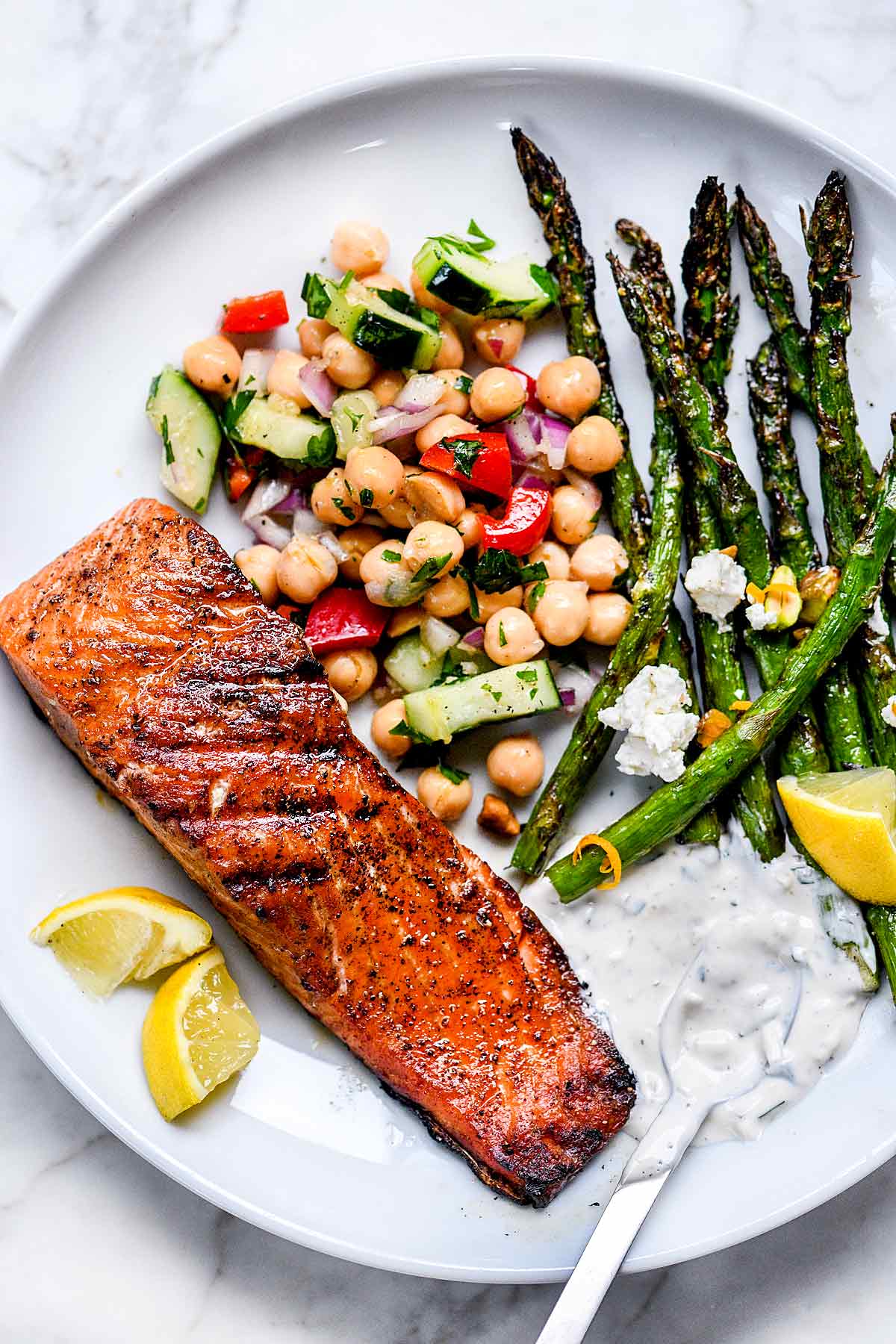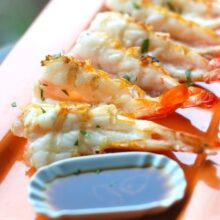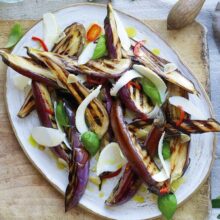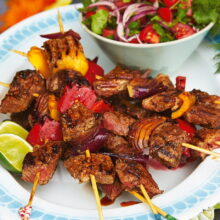Grilling Salmon Fillet

A thick piece of salmon, like this one, requires some indirect heat and a bit of patience to cook through without overcooking. Choose salmon that is wild, if possible.
Rub the salmon with oil and season it with a combination of brown sugar, smoked paprika, dried thyme, and garlic powder. It’s best to season fish right before grilling to prevent moisture loss.
Gas Grill
When grilling salmon fillets, start with a hot grill and generously oil the grates. This helps to prevent the fish from sticking and also speeds up cooking time. Choose a high-heat oil, such as canola or avocado, as it will hold up to the heat and resist burning.
Choose wild-caught salmon for a more assertive taste, or farm-raised varieties if you prefer a milder flavor. Pat the fish dry with paper toweling before grilling, especially if it was previously marinated.
Grill the fish for about 3 minutes, then flip it over and cook for an additional 2 to 4 minutes (or until a fork easily flakes the flesh). You can check doneness by using an instant-read thermometer or by testing a small section of the fillet with a fork. If it appears cooked through but is still too moist, remove it from the grill and let rest for 5 to 10 minutes. You can always put a fillet back on the grill to finish cooking, but once it is overcooked, there is no turning it back!
Charcoal Grill
Grilling salmon on a charcoal fire imparts a subtle, smoky flavor. It is easier to flip than fish cooked in the oven, and you don’t have to worry about burning or sticking the fillet to your grates.
A marinade enhances the flavor of grilled salmon and adds moisture. Choose a marinade made with fat and acid in a 3:1 ratio, plus salt and an aromatic such as garlic or fresh herbs.
Start with a hot grill and oil the grates well to avoid sticking. If your grill has a basket, put the salmon in it to prevent it from falling through the cracks. If not, place the salmon on the grates skin-side up.
When the salmon is cooked through, you can tell by its color and whether it flakes easily with a fork. A digital meat thermometer takes the guesswork out of knowing if the salmon is ready to serve, but it is also possible to use a knife or fork to check its doneness.
Oven
For a slightly different approach to salmon fillet grilling, roast the fish in the oven instead of over direct heat. This method creates an evenly cooked and succulent piece of salmon without the risk of overcooking or charring the outside.
Preheat the oven to 400 degrees F. Create a parchment paper packet for each salmon fillet by either folding a large piece of foil in half, then cutting out a semi-circle a few inches wider than the salmon and placing it on a sheet pan, or using two pieces of parchment of roughly the same size (more edges to crimp together). Drizzle the salmon fillets with oil and season them with salt, pepper and paprika or Cajun seasoning.
Seal the packets tightly and bake until the salmon is cooked through and the rounded sides of the parchment puff up, about 10 to 15 minutes depending on the thickness of the fillet. The salmon is ready when it easily flakes with the tip of your finger and appears opaque when lightly touched. Use an instant-read thermometer or poke the fish with a fork to confirm the internal temperature is at least 145 degrees F.
Temperature
Preheat your grill to a medium-hot setting before you start cooking the salmon. This helps to create a beautiful sear on the flesh and ensures that it cooks evenly.
If you’re using a grill with grates, place the fillets directly on the grates and allow them to cook for 6 minutes skin side down. This allows the salmon to form gorgeous grill marks and to reach an internal temperature of 140°F – 145°F without burning the skin.
When the fish is finished, it should flake easily with a fork and have a light opaque pink color. Avoid overcooking it or it will be dry and hard to eat.
During the last few minutes of cooking, brush the salmon fillets with the butter mix and season them again with salt and pepper. It’s important to do this right before baking, because salt draws out moisture much faster than other spices and herbs. This also helps the fillets to retain the moisture and flavor of the herb mix when baked.
Grilling Salmon Fillet Step By Step
Grilling salmon fillets is a delicious and healthy way to prepare this flavorful fish. Here’s a simple recipe for grilling salmon fillets:
Ingredients:
- Salmon fillets
- Olive oil
- Salt and freshly ground black pepper
- Optional seasonings: lemon zest, minced garlic, paprika, dill, or your favorite marinade
Instructions:
- Preheat the Grill:
- Preheat your grill to medium-high heat (around 350-400°F or 175-200°C). Ensure the grill grates are clean and well-oiled to prevent sticking.
- Prepare the Salmon:
- Rinse the salmon fillets under cold water and pat them dry with paper towels.
- Season the Salmon:
- Drizzle a little olive oil over the salmon fillets to prevent sticking and enhance flavor.
- Season the salmon with salt and freshly ground black pepper. You can also add additional seasonings like lemon zest, minced garlic, paprika, dill, or your preferred marinade for extra flavor.
- Place the Salmon on the Grill:
- Place the salmon fillets on the grill grates, skin side down.
- Grill the Salmon:
- Cover the grill and cook the salmon for about 4-6 minutes per side, depending on the thickness of the fillets and your desired level of doneness.
- Use a spatula to gently flip the fillets to keep them intact.
- Check for Doneness:
- To check for doneness, cut into a fillet near the thickest part. The salmon should be opaque throughout, with no translucency. The internal temperature should reach 120-145°F (49-63°C), depending on your preference.
- Remove and Serve:
- Once the salmon is grilled to your liking, remove it from the grill and transfer it to a serving platter.
- Garnish and Enjoy:
- Garnish the grilled salmon with a sprinkle of fresh herbs, a drizzle of olive oil, a squeeze of lemon juice, or your favorite sauce or dressing.
Grilled salmon fillets are versatile and can be served with a variety of sides, such as grilled vegetables, rice, or a fresh salad, for a complete and satisfying meal. Enjoy the rich, smoky flavor of grilled salmon!



